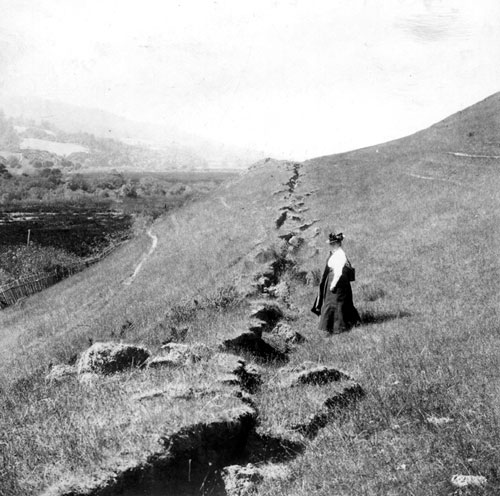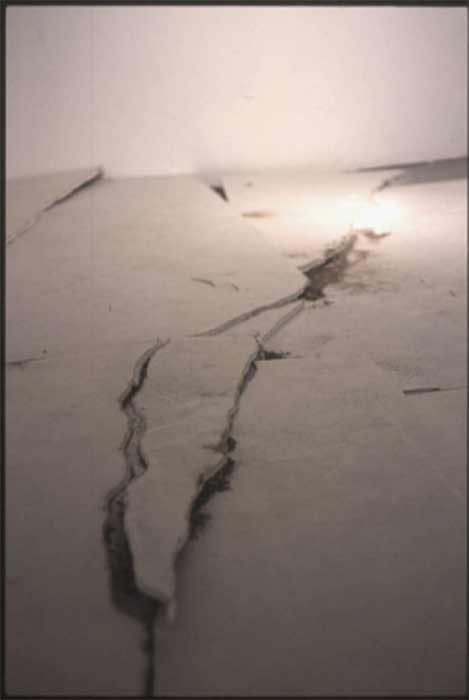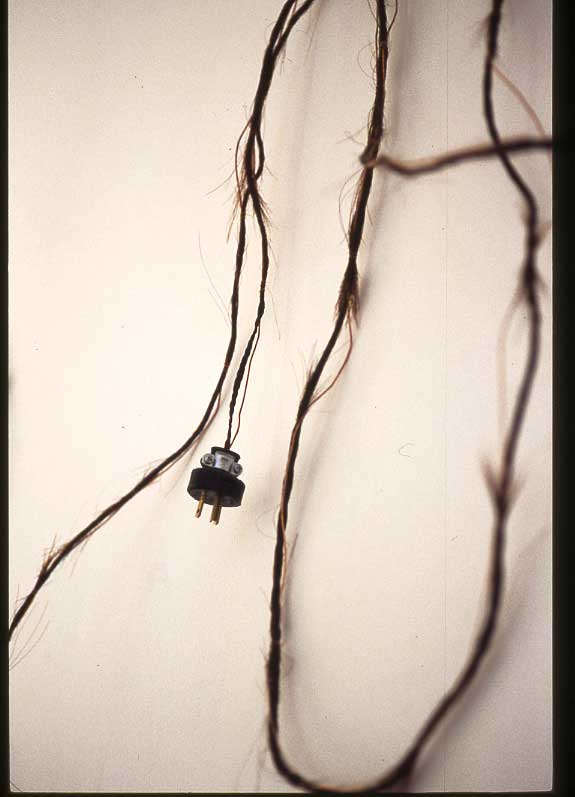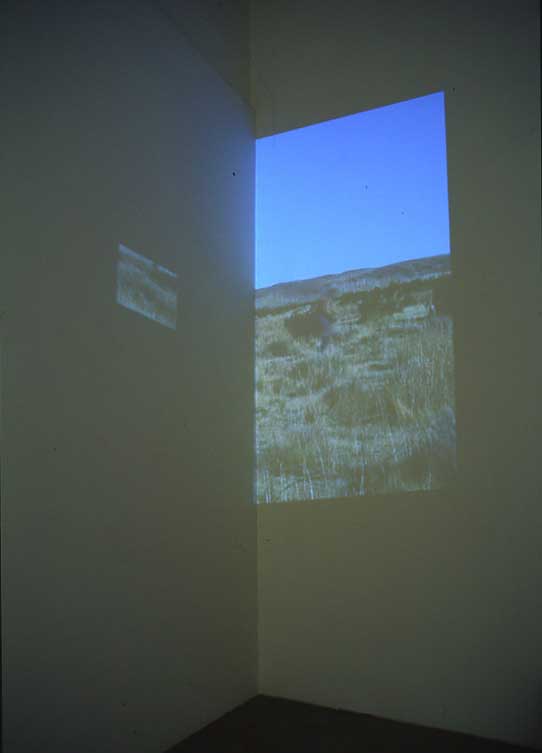|
San Andreas Project An installation at Claremont Graduate University Oct. 30 - Nov. 5, 2006 The San Andreas Fault is scroll right >>  photo by G.K. Gilbert, U.S. Geological Survey |
 In 1857, the Fort Tejon Earthquake on the San Andreas Fault resulted in a 30-foot displacement along the faultzone.
A corral built directly on the faultline was changed from a circular-shape to an s-shape-- broken open.
In 1857, the Fort Tejon Earthquake on the San Andreas Fault resulted in a 30-foot displacement along the faultzone.
A corral built directly on the faultline was changed from a circular-shape to an s-shape-- broken open. |
 Tectonic Plates
Tectonic Platesdrywall sheets, dirt |

Shovello shovel, cello strings, wood, horsehair A shovel, like the one used in the accompanying video, is outfitted with cello strings. The strings measure 36.9 cm., which is the average distance the San Andreas Fault has moved since the day I was born. This personal measurement now creates a specific and personal tonal range for this instrument. The San Andreas fault is a lateral strike-slip fault. The correct way to play this instrument is with lateral strike-slip movements. |
 Powerlines
Powerlinescopper wire, horse hair, powerplugs copper wires transmit power and communication over great distances in an instant. Hair grows imperceptibly slowly. An earthquake fault moves imperceptibly slowly, and on occasionally, extremely powerfully. These powerlines represent both of these energies together. |
 Powerlines (detail)
Powerlines (detail)
|
 two video images
two video imagesMojave Desert I continuously dig a hole, and carry the dirt offscreen towards the corner of the room. within a smaller video image, a mountain begins to grow as I move the dirt from the hole on the right, and pile it up in the image on the left. |